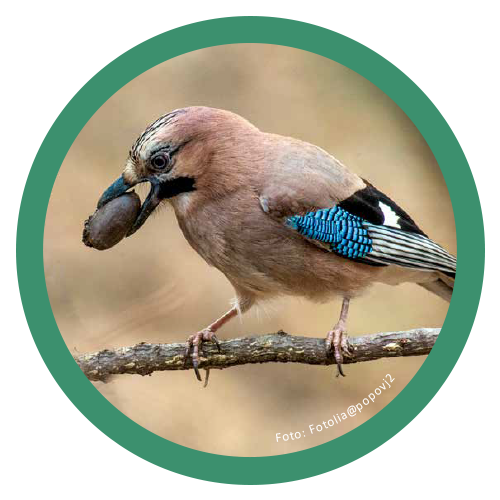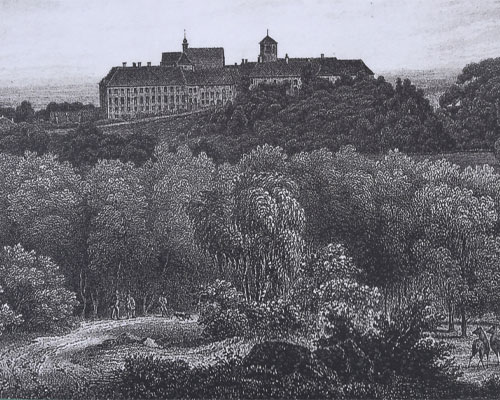Forests can develop wherever it is not too dry and not too cold. Germany is located in the climatic area of deciduous forests. Natural events such as ice ages, fires, and storms can destroy forests on a large scale. By spreading seeds, the forest recaptures these areas.
Carried by the wind
Willows, poplars, birches, and alders have very light seeds. When carried by the wind, they can quickly cover long distances and re-populate open spaces. They are the pioneer tree species. Pine, spruce, and fir also have light, winged seeds, but they are not so fast. The maples with their heavy propeller fruits are even slower.
Transport helper
The even heavier fruits of beech, oak, cherry, or chestnut need transportation helpers to move away from the mother tree. These are usually animals like the jay or the squirrel. That some of the seeds are eaten, Mother Nature has already factored into the picture.
By human hands
Only we humans are able to concertedly plant forest areas by planting young trees. Occasionally this also happens through sowing seeds, for example with oaks.

With their feather-light tufts of long, soft, white hairs, the poplar seeds can cover large distances even in light winds. The trees also thrive on poor, gravelly soils, where they form a protective forest for subsequent tree species.

By human hands
Humans harvest high-quality trees and use the obtained seeds to raise young trees to plant in the forest.

Transport helper animals
Some trees pack their seeds into nutritious pulp that is coveted by animals. The pit, the actual seed, is often excreted undamaged.

Carried by the wind
Many pioneer tree species provide their small seeds with wings so that the wind can carry them over long distances.

Can trees fly? Although trees are firmly anchored to the ground by their roots, they can cover great distances. They reproduce! There is a small tree in every seed and it can fly away with the wind, be taken away by animals, or be washed away by water. Some seeds have extra wings for this or they attract animals with a delicious covering made of pulp. Most can float anyway.

The fastest way to spread seeds is with the wind. Over time, trees have developed seeds with many different kinds of wings so that they can be carried by the wind as well as possible. In English we sometimes call them helicopters, whirligigs, or spinning jennies.
The next station is waiting for you.



